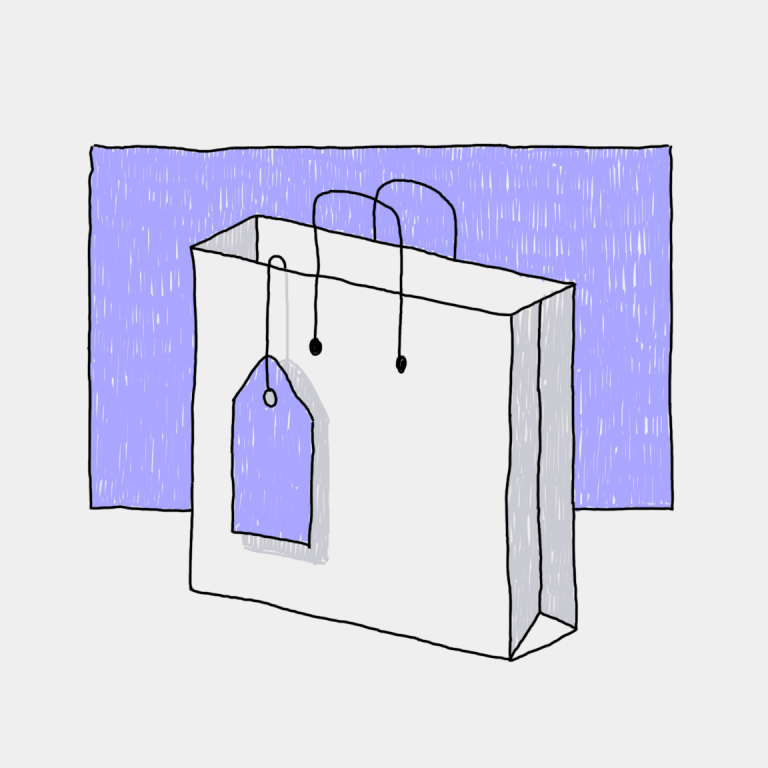Whether you’re an artist or an aspiring dealer, learning about the art market is an important step in building a successful art business that can keep up with the times.
In this guide, you’ll learn about the global art market, how to maximize your success with online sales, and valuable stats that will help you develop a profitable business strategy you can put into practice today.
Let’s get started.
Global Art Market in Numbers
- In 2022, the worldwide art market amassed close to $68 billion. (Source: Statista)
- In 2022, the US maintained its position as the leading market, representing 45% of global sales by value. It experienced an 8%
year-on-year growth, reaching arecord-high of $30.2 billion. (Source: Art Basel) - Global online sales in the art and antiques market saw a decline of approximately 17% to $11 billion in 2022 compared to the preceding year. (Source: Statista)
- Sales in the auction house sector, encompassing both public and private sales, experienced a 2%
year-on-year decline to reach $30.6 billion. (Source: Art Basel) - In 2023, women surpassed men in spending, with a median of $72,500, showing continued growth from 2022. (Source: UBS)
Understanding the Global Art Market (And Why Having a Website Is Important)
The global art market is a complex system of auction houses, galleries, private dealers, and more. To understand how the system works and where your art business fits in it, we’ll look at a few specific sections of the market.
Working with private art dealers
Private sales within the art world include everything from art fairs to gallery sales. As you start an art business, it’s a good idea to prioritize sales channels that are popular within the global art market. Here are the top two options:
- 42% of dealers sell through galleries
- 30% of dealers sell art online
The remaining sales take place through a combination of local and overseas art fairs and other channels.
For new dealers or emerging artists, it’s a good idea to take advantage of the popularity of online sales. Selling art through physical gallery settings can be an important part of working in the global art market, but starting your art business online is a smart move since there’s a lower barrier to entry. After all, you can easily build an online store with Ecwid.
In summary, aspiring artists and dealers alike should prioritize building an online store before looking for
Understanding art collectors
No matter where you sell art, understanding the people who buy it will help you develop a successful business strategy.
In 2020, the biggest art buyers were Millennials. Collectors from that generation had a median expenditure of $378,000
Why? According to the global data, 62% of Millennials prefer online shopping or hybrid (both online and offline). By developing an online sales strategy, you’ll be positioning yourself to connect with an engaged demographic.
Other data from the Art Basel and UBS
Connecting with stable market segments
Although the global art market is expected to grow in the coming years, recent data shows how the
The process of targeting stable market segments will vary from business to business, but the data points again to the value of building an online store.
- Before 2020, online transactions accounted for about
one-tenth of the global art market - Now, online art sales account for almost a quarter of the entire global art market
Yep. You guessed it: To take advantage of this growing online art market, new artists and dealers should focus on building an online presence.
Understanding Auction Houses and Other Traditional Sales Channels
So online sales should be part of your strategy, but what about traditional sales channels? And what even are traditional sales channels?
Essentially, traditional sales channels within the art world include auction houses and galleries.
Let’s look at auction houses first.
Selling art through auction houses
In 2020, leading auction house Christie’s saw a major decline in sales — going from about $6 billion in 2019 to just $4.4 billion in 2020. In contrast, Sotheby’s, another leading auction house, saw an increase in sales. This data suggests that the
But what does that mean for new artists and dealers?
Generally, pursuing the global art auction market doesn’t appear to be a good idea. In fact, Sotheby’s itself acknowledges the decline of global auctions, saying, “Local will be the new global.”
Local will be the new global.Sotheby’s
For people just entering the art market, this shift means it’s smart to focus on working with local auction houses rather than international options.
Selling art through brick-and-mortar galleries
Physical art galleries were impacted by the pandemic as well. Data from Art Basel and UBS shows that gallery sales contracted by 36% in 2020 as nearly all physical art galleries closed their doors.
This shift led to an increase in online sales, but it also made the art world turn its attention to local markets. According to Sotheby’s, while international travel restrictions made buyers focus less on foreign galleries, the pandemic also made them take a closer look at local art scenes. This change is expected to continue as pandemic restrictions come to an end.
As a result, aspiring artists and dealers should get involved with the artistic communities in their hometowns before tackling international galleries.
How the Art Market Combines Digital and Physical Segments
We’ve learned that the current art market has space for online stores and
- About 50% of galleries are using online viewing rooms to show what they have
on-site - 67% of dealers who typically attend art fairs are using virtual exhibitions more frequently
- 69% of dealers and galleries are expanding their social media activity
While this data might seem to suggest that physical art galleries are a dying breed, the art world seems to think otherwise: Data from Art Basel shows that over 60% of Millenial collectors are optimistic about the future of art galleries. Meanwhile, data from artnet.com indicates that nearly 60% of respondents plan to visit art institutions as frequently as they did before the pandemic while about 18% say they’ll visit these institutions more frequently than before the pandemic.
So what does this tell new artists and dealers? If you want success in the art market, you need to combine online sales and connect with local art communities.
Starting Your Art Business
It’s an exciting time to join the global art market — and building an online presence is the best way to get started.
That’s where Ecwid comes in.
With a straightforward dashboard that lets you control everything from your website’s design to the types of customers you want to target, Ecwid can help you connect with local art communities and build a profitable online store.
So what are you waiting for? Join the art market today!









